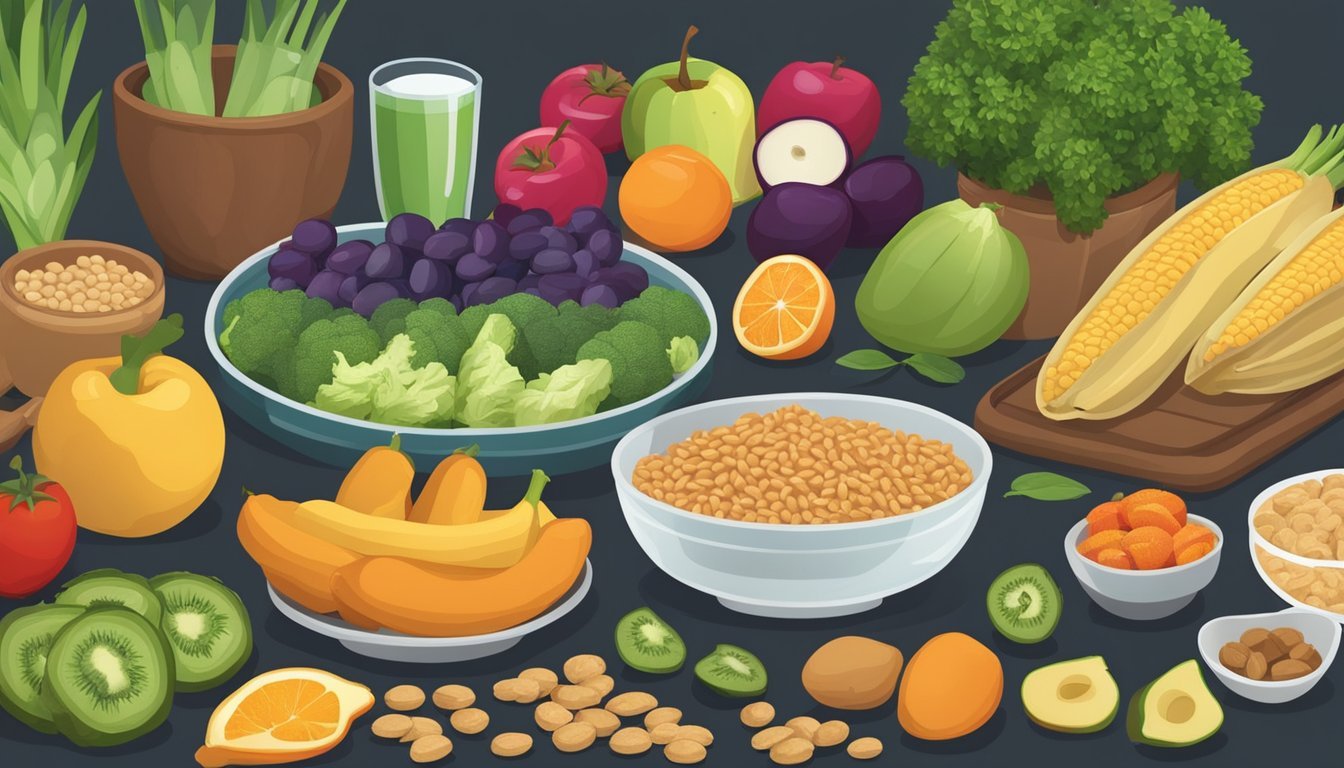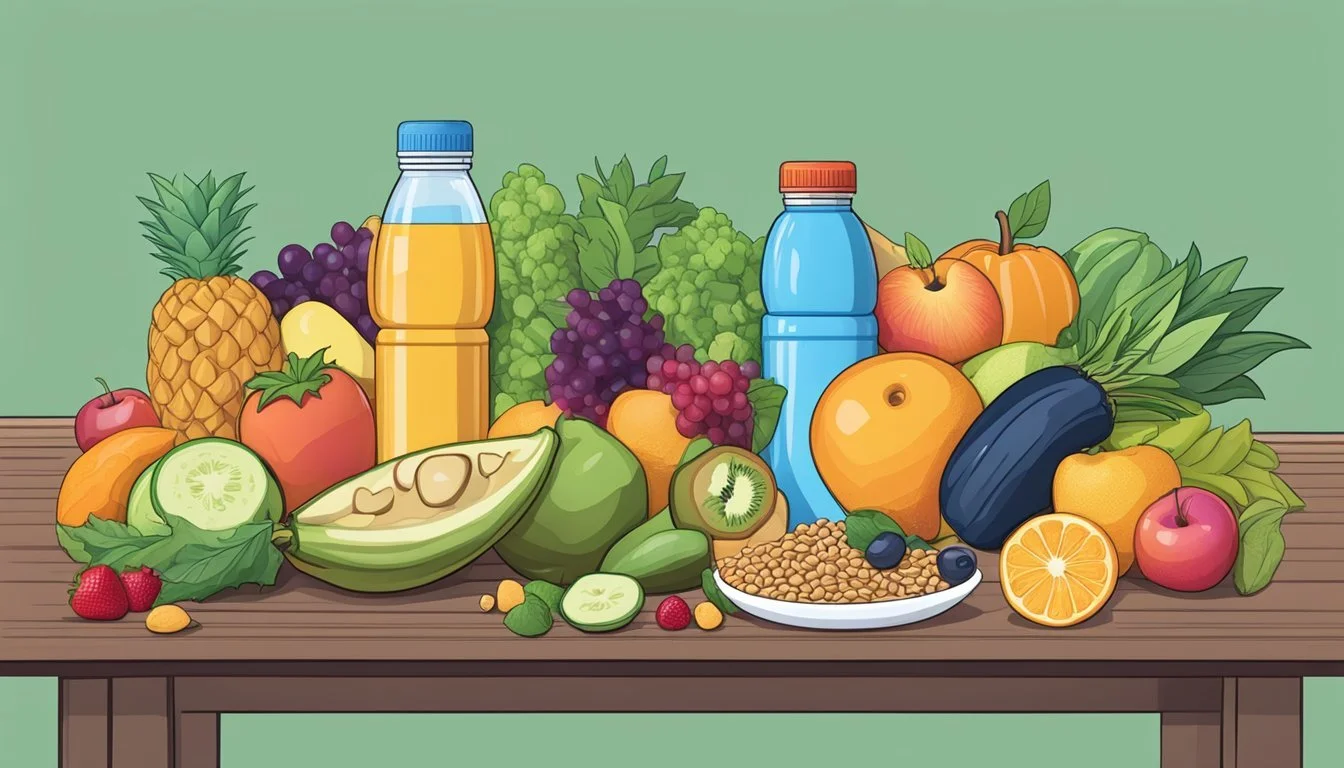Best Foods for Sustainable Weight Loss
Your Go-To Nutritional Guide
Achieving sustainable weight loss requires adopting dietary habits that promote both good health and nutritional adequacy while enabling progressive and maintainable fat reduction. Unlike fad diets that promise quick results, sustainable weight loss is achieved through consistent, long-term changes in eating patterns. The key is focusing on nutrient-dense foods that provide the body with necessary vitamins, minerals, and other nutrients without excessive calories.
When embarking on a weight loss journey, it is essential to consider the quality of foods consumed. Whole, minimally processed foods like fruits, vegetables, lean proteins, whole grains, nuts, and seeds are staples in a sustainable weight loss plan. These foods offer satiety, keeping hunger at bay and making it easier to adhere to a calorie-controlled diet over time.
In addition to individual health benefits, a sustainable approach to weight loss is invariably linked to broader, environmentally conscious food choices. Selecting foods that have a lower impact on the environment, such as plant-based proteins and locally sourced produce, can contribute to overall sustainability goals while also aiding in personal health and weight management efforts.
The Role of Nutrition in Weight Loss
Nutrition serves as the foundation for weight management, with particular food groups playing significant roles in sustainable weight loss. A well-structured diet can boost metabolism, maintain muscle mass during calorie restriction, and increase satiety, which helps in reducing overall calorie intake.
Proteins for Weight Management
Proteins are crucial for sustaining muscle during weight loss, bolstering metabolism, and enhancing the feeling of fullness. Lean proteins such as chicken, turkey, and fish, along with plant-based options like beans, lentils, and nuts, should be staple components in the diet.
Importance of Fruits and Vegetables
Fruits and vegetables are packed with vitamins, minerals, and fiber, which contribute to a sense of fullness and overall health. Regular intake of berries, cruciferous vegetables (like broccoli and cauliflower), and leafy greens can aid in creating a nutrient-rich, low-calorie diet that supports weight loss.
Whole Grains and Fiber-rich Foods
Incorporating whole grains like oats, brown rice, quinoa, and barley into meals increases fiber intake, aiding digestion and promoting satiety. The fiber content in these foods helps to regulate the body's use of sugars, keeping hunger and blood sugar in check.
Healthy Fats and Omega-3s
Contrary to some beliefs, healthy fats are essential even when aiming to lose weight. Foods rich in omega-3 fatty acids and unsaturated fats, such as avocado, olive oil, and salmon, offer numerous health benefits and can help maintain a feeling of fullness, preventing overeating.
Balancing Carbohydrates
Carbohydrates are the body's primary energy source, and selecting the right kinds can support weight loss. Emphasizing complex carbohydrates like sweet potatoes, legumes, and whole grains, which are dense in nutrients and resistant starch, can help manage calorie intake while providing lasting energy.
Mindful of Dairy and Alternatives
Dairy products and alternatives, such as Greek yogurt, are valuable for their calcium and protein content. Choosing low-fat or fat-free options can support weight loss efforts while still providing essential nutrients that dairy is known for.
Achieving a Calorie Deficit
Creating a calorie deficit involves consuming fewer calories than the body expends through daily activities and metabolic processes. For sustainable weight loss, it's essential to approach this deficit in a manner that supports health and satiety.
Understanding Caloric Balance
Caloric balance is the ratio between calories consumed through food intake and those expended by the body for basic metabolism and physical activity. Achieving a calorie deficit means ensuring that the calories one consumes are less than those burned, leading to weight loss. It is crucial for individuals to calculate their Total Daily Energy Expenditure (TDEE) to estimate how many calories they need to maintain their current weight before planning a deficit for weight management.
Controlled Portion Sizes
To facilitate a calorie deficit, controlling portion sizes is key. Individuals can use various strategies, such as measuring cups or a digital scale, to ensure they are consuming controlled portions that contribute to a calorie deficit without overeating. Smaller portions naturally limit calorie intake, promoting moderation and preventing calorie surplus.
Examples:
Rice: 1/2 cup (cooked)
Chicken: 3 ounces (cooked)
Vegetables: 1 cup (raw)
Minimizing Processed Foods
Processed foods often contain high amounts of sweets, added sugars, and fats that increase caloric density without providing essential nutrients. By minimizing the consumption of processed snacks and meals, one can focus on nutrient-dense options that support healthy weight loss and enhance satiety, leading to lower overall calorie intake.
Preferable choices:
Fresh fruits instead of fruit-flavored snacks
Whole grains instead of refined cereals
Nuts and seeds in moderation
Incorporating Soups and Salads
Including soups and salads in the diet can be an effective way to achieve a calorie deficit while sustaining fullness and hydration. These dishes typically have lower caloric density due to their high vegetable and fiber content. Consistent inclusion of soups and salads can help maintain a feeling of satiety, aiding in sustainable weight loss.
Ideas for soups and salads:
Vegetable broth-based soups with lean protein
Salads with a mix of leafy greens, colorful vegetables, and a vinaigrette dressing
Physical Activity and Exercise
In the pursuit of sustainable weight loss, combining regular exercise with a balanced diet enhances the metabolic rate and the number of calories burned. Exercise not only aids in reducing body fat but also contributes to improved body composition and overall health.
Strength Training and Muscle Growth
Strength training is crucial for developing muscle mass, which in turn boosts metabolic rate as muscles consume more calories than fat, even at rest. A regimen that integrates at least two days per week of strength exercises for all major muscle groups can lead to effective long-term weight loss and better body composition.
Frequency: At least 2 days per week
Type of exercises: Squats, deadlifts, bench press, and overhead press
Cardiovascular Exercises
Cardiovascular exercises enhance cardiovascular health and increase caloric burn, supporting weight loss. Activities like brisk walking, running, cycling, or swimming should ideally be performed at a moderate intensity for 150 to 300 minutes weekly, as per health guidelines, to build endurance and aid in fat loss.
Examples:
Moderate: Brisk walking, dancing, water aerobics
Vigorous: Running, jump rope, competitive sports
Flexibility and Balance Workouts
Incorporating flexibility and balance workouts, such as yoga or Pilates, can improve joint range of motion, reduce injury risk, and enhance balance. These workouts complement strength and cardiovascular training routines, ensuring a well-rounded approach to physical activity.
Benefits:
Injury prevention
Improved posture and coordination
Integrating Exercise into Lifestyle
Adopting regular exercise as part of one's lifestyle is essential for sustained weight management. This might involve choosing activities that fit within an individual's daily routine and preferences, such as walking or biking to work, taking stairs, or engaging in recreational sports.
Tips for integration:
Choose enjoyable activities
Set specific and achievable goals
Use a diary or app to track progress
Special Considerations for Sustainable Weight Loss
Achieving sustainable weight loss requires tailoring strategies to individual needs, considering gender, age, hormonal balance, and choosing an appropriate diet for long-term adherence.
Adjustments for Men vs. Women
Men and women differ in hormonal makeup, metabolism, and muscle mass, which can influence how they lose weight. Men typically benefit from higher lean protein intake due to their larger muscle mass, which can aid in burning calories more efficiently. Women, on the other hand, may need diets higher in fiber and tailored to manage hormonal effects that can influence belly fat.
Weight Loss for Different Age Groups
Age-specific guidance is crucial, as metabolism naturally slows with age. Young adults might find success with a variety of sustainable diets, while older adults often benefit from Mediterranean or plant-based diets, which are rich in nutrients and lower in calories. It's important to maintain nutrition while acknowledging that older adults may need fewer calories.
Role of Hormones and Stress
Hormonal imbalances, particularly involving cortisol, the stress hormone, can be detrimental to weight loss efforts. For both men and women, managing stress is essential to prevent the storage of belly fat. Strategies like mindfulness, adequate nutrition, and consultations with a registered dietitian can be beneficial.
Sustainable Diet Plans
Long-term adherence to a sustainable diet is key. A Mediterranean diet is highlighted for its balance of lean proteins, healthy fats, and carbohydrates. A plant-based or vegetarian diet can contribute to weight loss and sustainability goals. Meanwhile, a low-carb approach might be suitable for some, focusing on high-quality proteins and reducing calorie-dense carbohydrates.
Conclusion
To achieve sustainable weight loss, individuals should adopt a holistic approach that encompasses a balanced diet, physical activity, and behavioral changes. Transitioning to whole foods and plant-based diets provides a bounty of nutrients essential for long-term health and weight management. These diets are not only replete with vitamins and minerals but also fiber, which can enhance satiety and reduce overall caloric intake.
Physical activity is a cornerstone of maintaining weight loss. The Centers for Disease Control and Prevention suggests at least 150 minutes of moderate aerobic activity weekly, such as brisk walking. This regular activity complements dietary efforts and contributes to overall cardiovascular health.
For those seeking structure, the Volumetrics diet underscores the importance of consuming low-calorie, high-water-content foods to aid in feeling full. It's a testament to the effectiveness of focusing on nutrient density rather than caloric deprivation.
In a shift towards environmental and personal well-being, reducing red meat and sugar consumption is recommended. People should instead increase their intake of fruits, vegetables, nuts, and legumes.
A balanced macronutrient distribution is critical, where diets rich in protein can aid in satiety and maintenance post-weight loss. Keeping carbohydrates to moderate levels, primarily from whole sources, supports weight loss without compromising long-term safety.
Adhering to these principles ensures one's approach to weight loss is practical, enjoyable, and most importantly, sustainable. They intertwine to foster an environment where weight loss goals align with a healthy lifestyle.







